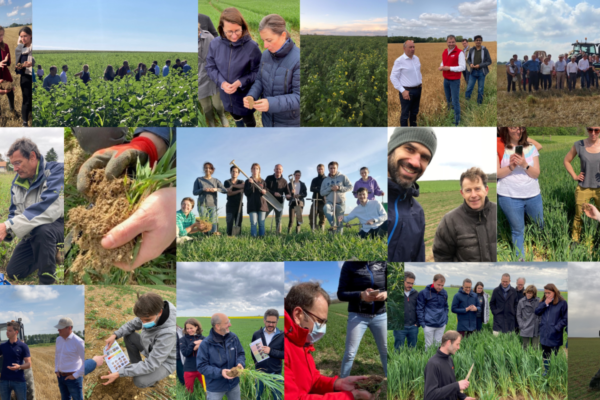Transitioning to a New Food System
4-minute read
Soil is degrading, but the vast life within it still has the potential to capture carbon and grow food.
For food businesses, meeting global demand and decarbonising their operations will be key areas of their work during this decade and beyond. Taking Nestlé as an example, agriculture accounts for nearly two-thirds of its total greenhouse gas emissions. So, subsequently, restoring the health of agricultural soil is a big focus of the climate agenda.
Environmental costs of the food system
For decades, many of us have enjoyed the benefits of agricultural innovation, which has produced low-cost food. Such methods are no longer paying dividends. Research by the 2021 United Nations Food Systems Summit estimated the environmental costs of this production being in the region of $7 trillion every year.
It means traditional food growing methods like monoculture, where the same crops are grown year after year, are reducing the amount of nutrients in the earth. This leaves soil, the ecosystem in which we grow our food, degraded to the point it cannot grow it as effectively, or at all.
Not only do we need soil to grow food, it also has vast potential to sequester carbon, as it is believed there is more carbon stored in our soil than all the planet’s plants and the atmosphere combined. Yet damaged soil releases carbon, previously buried within the soil, into the atmosphere; further impacting our climate and causing more frequent floods and drought that in turn further damage soil.
Hidden underground universe of carbon
Despite our reliance upon it, the soil beneath our feet is a largely hidden universe of abundant life we are still learning about. It’s hard to comprehend that in just one hand-full of healthy soil, it is estimated there are as many as fifty thousand different species, in which there are more microorganisms than human beings on the planet.
Then there are the earthworms. Charles Darwin doubted if any other species has played such an important part in the history of the world, due to their ability to create and sustain soil by processing dead leaves and roots, and creating space for plant and tree roots to grow.
This activity allows the soil to become like a sponge for water and nutrients, creating the conditions to grow food and store carbon. While there used to be up to one ton of carbon per acre of soil, in many places we now hardly reach a few dozens of kilograms.
A focus on soils and farmers
For a growing number of businesses, soil is at the heart of their responsible sourcing, looking at how they can support farmers in their supply chain to transition to new practices to regenerate their land, and ultimately to a new system of growing food.
This requires a significant amount of collaboration. It’s necessary to work with farmers, scientists, agronomists and soil technicians, not to mention government.
There is momentum. Last year, Nestlé announced it is investing CHF 1.2 billion by 2025 in regenerative agriculture practices; in October, Lidl began selling potatoes grown from regenerative agriculture across 1,570 of its supermarkets, and McCain committed that 100 percent of its potato crop acreage will be grown using regenerative agriculture by 2030.
Together, we can support farmers to bring life back to the soil, provide food and store carbon to regulate the climate.

